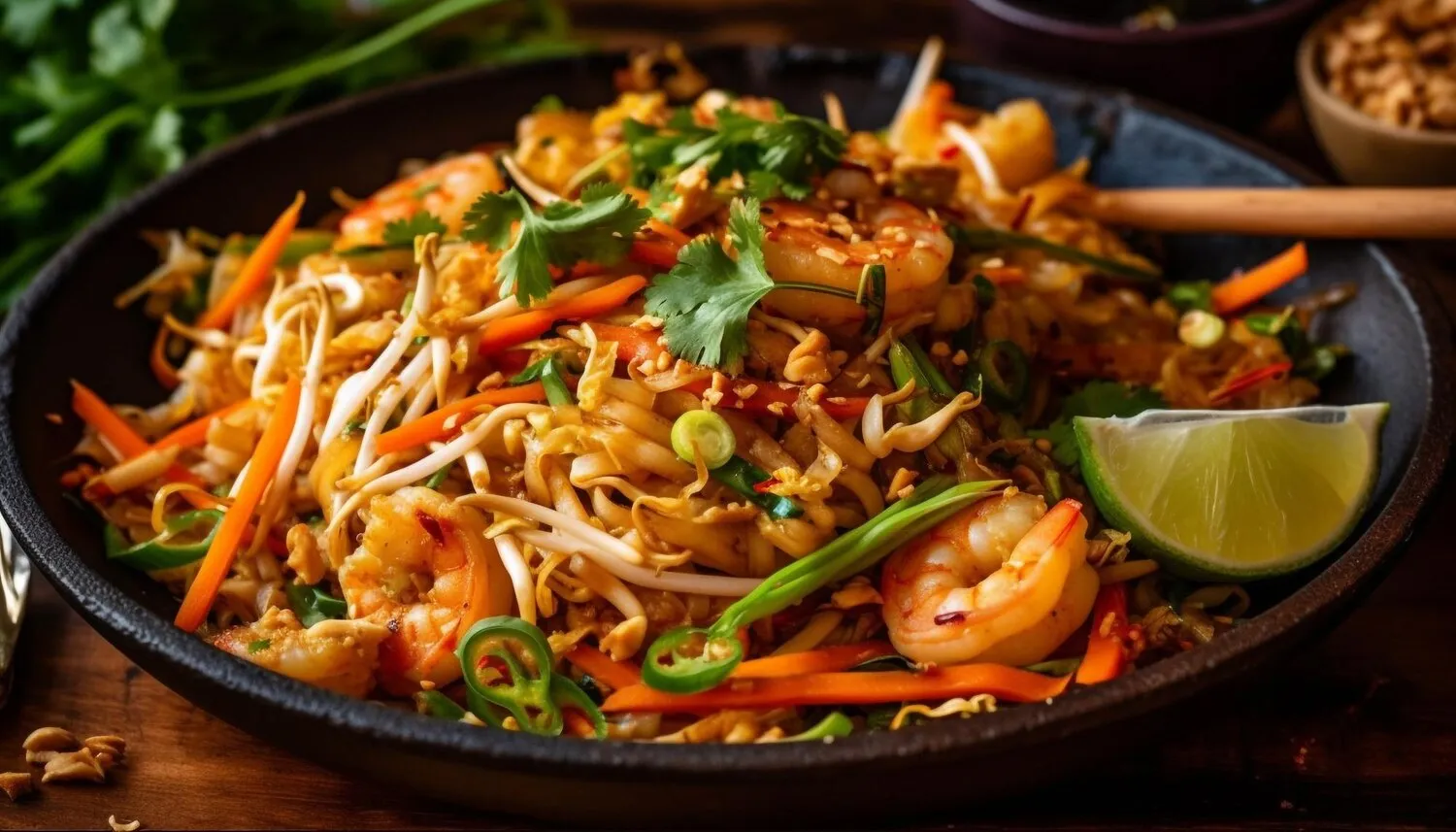
Pad Thai
Stir-fried rice noodles with egg, tofu, bean sprouts, and peanuts in a tamarind sauce.
Nutrition Facts
* The % Daily Value (DV) tells you how much a nutrient in a serving of food contributes to a daily diet. 2,000 calories a day is used for general nutrition advice.
White Elephant Thai Cuisine at Chestermere Station
Pad Thai's history is relatively modern, emerging in the 1930s-40s. It's believed to have been promoted as a national dish by Prime Minister Plaek Phibunsongkhram to foster national unity and reduce rice consumption. The government provided recipes and encouraged street vendors to sell it, using ingredients readily available and affordable. Chinese noodle dishes also likely influenced its creation.
Pad Thai is deeply ingrained in Thai culture as an accessible and representative dish. It is a staple of street food and restaurants, and a popular introduction to Thai cuisine for foreigners.
National Identity
Pad Thai played a role in building a national culinary identity in Thailand during a period of significant social and political change. It became a symbol of Thai cuisine, widely recognized both domestically and internationally.
Street Food Staple
Pad Thai is one of the most popular street foods in Thailand. Street vendors offer variations, often cooking it to order in front of the customer, providing an authentic and engaging culinary experience.
Culinary Ambassador
Pad Thai serves as a culinary ambassador, introducing Thai flavors to people around the world. Its familiar ingredients and relatively mild flavors make it a welcoming entry point to the broader spectrum of Thai cuisine.
Pad Thai boasts a complex flavor profile: sweet, sour, salty, and umami, with hints of spice and nuttiness.
The sweetness comes from palm sugar, the sourness from tamarind paste, the saltiness from fish sauce, and the umami from these ingredients combined, often enhanced by dried shrimp. Chili flakes provide optional spice. Fresh lime adds brightness. The peanuts contribute a crunchy, nutty element. The combination offers an incredibly satisfying and balanced taste.
Tamarind Paste is Key
Use good quality tamarind paste for the distinctive sour flavor. Avoid tamarind concentrate with added sugars or preservatives.
Noodle Texture
Soak the rice noodles properly according to package instructions. Overcooked noodles will be mushy, while undercooked noodles will be too firm.
Wok Hei
Cooking in a wok over high heat imparts a smoky flavor called 'wok hei,' which enhances the dish. If using a standard pan, ensure it's hot before adding ingredients.
Don't Overcrowd the Pan
Cook in batches to avoid overcrowding the pan. Overcrowding lowers the temperature and steams the ingredients instead of stir-frying them.
Explore additional Noodles dishes and restaurants
Explore NoodlesDiscover top dining spots and culinary experiences in Chestermere.
Explore ChestermereLearn more about the food culture, restaurant scene, and culinary heritage of Canada.
Explore Canada